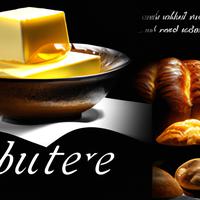
1 serving (14 grams) contains 102 calories, 0.1 grams of protein, 11.5 grams of fat, and 0.0 grams of carbohydrates.

Log this food in SnapCalorie

Nutrition Information
Calories |
1723.0 | ||
|---|---|---|---|
% Daily Value* |
|||
| Total Fat | 194.3 g | 249% | |
| Saturated Fat | 123.3 g | 616% | |
| Polyunsaturated Fat | 0 g | ||
| Cholesterol | 523.6 mg | 174% | |
| Sodium | 33.8 mg | 1% | |
| Total Carbohydrates | 0 g | 0% | |
| Dietary Fiber | 0 g | 0% | |
| Sugars | 0 g | ||
| protein | 1.7 g | 3% | |
| Vitamin D | 118.2 mcg | 591% | |
| Calcium | 50.7 mg | 3% | |
| Iron | 0 mg | 0% | |
| Potassium | 50.7 mg | 1% | |
* Percent Daily Values are based on a 2,000 calorie diet. Your daily values may be higher or lower depending on your calorie needs.
Food Attributes
Source of Calories
About Butter and honey
Butter and honey is a simple yet indulgent culinary pairing found across various cuisines, often used as a spread or topping. Butter, typically made from cow's milk, is a rich source of fat, providing energy and aiding in vitamin absorption. Honey, derived from flower nectar and processed by bees, offers natural sugars, antioxidants, and trace nutrients such as vitamins and minerals. Together, they create a balance of creamy richness and natural sweetness, commonly featured in breakfast dishes, baked goods, or as a glaze in Mediterranean and Middle Eastern cuisine. While butter and honey can provide quick energy and a comforting flavor, they are calorie-dense and should be enjoyed in moderation, especially by individuals mindful of sugar or saturated fat intake. Opting for high-quality, organic ingredients can lend additional health benefits, reinforcing the nutritional value of this timeless duo.



